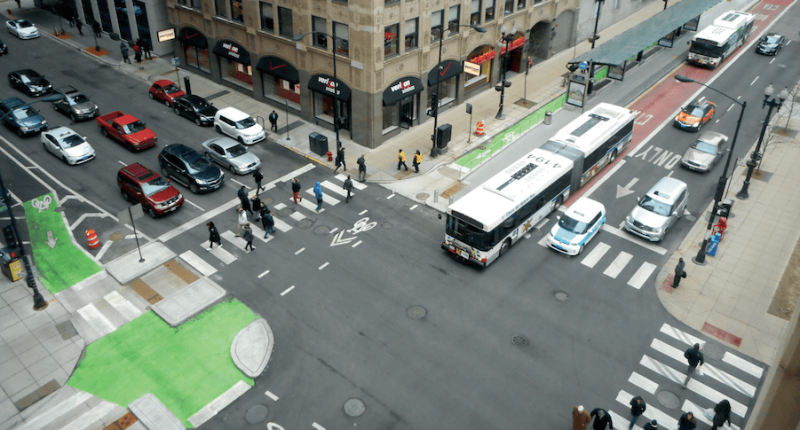The Myth of ‘Balance’ when Talking About How Streets Are Organized

This column is part of Streetsblog Denver’s Summer Reader Takeover, where we give you a platform to talk urban transportation. The author’s views don’t necessarily reflect those of Streetsblog Denver.
Have you ever attended a neighborhood meeting about traffic and asked for enhancements to sidewalks, crosswalks bike lanes, transit lanes, trails, or anything not car-related and been shot down with the refrain that “we have to maintain balance” in our transportation system?
I have. It’s infuriating. Because if Denver truly had to maintain balance, we’d see a monumental and immediate investment in walking, biking, and transit.
The “balance” statement ignores decades of history, the safety of street users, and best practices forged by more mobile cities across the globe. It is a non-confrontational way to tell people, “You’re asking for too much. We can’t take that much space from motorists.”
Our current transportation system is extremely unbalanced. Every scrap of street space is dedicated to moving cars, parking cars, or loading zones for cars. Out of the nearly 6,000 lane miles on Denver streets, 171 make room for a still highly-disconnected bike lane network. Dedicated bus lanes? Fewer than 12 miles.
Year after year, car lanes have a dedicated building and maintenance budget worth millions. Sidewalks? They’re the responsibility of property owners. Imagine if motorists had to rely on some random guy fixing a pothole just because it was in front of his house.
In truth, there is no balance on the streets or in the city budget. Almost all resources are dedicated to the movement and storage of cars, with crumbs left over for anyone who isn’t driving.
The imbalance becomes even more pronounced when you consider safety. All streets are designed for safety — as long as you’re in a car. Traffic lanes are wide, slip lanes move you out of the flow, lights are timed to keep you moving. If you’re on foot or on a bike, your needs are subordinate to motorists, which is especially inequitable given that people walking and biking are most vulnerable in every crash.
It’s not about balance. It’s about priority.
Prioritize the needs of walkers and wheelchair users, transit riders (who do, after all, walk to stops and stations), and bicyclists. Drivers should subordinate their need for speed to everyone’s need for safety, not the other way around.
The last point I’ll make regarding the myth of balance is tied to our land use. When a street is weighted towards free-flowing, high-speed traffic, it throws the livability for the people who live, work, or play there off balance.
By “balancing” our street system to move so many cars so quickly, we’ve unbalanced our neighborhoods. We’ve made it unpleasant or impossible to be outside along these corridors. Think of the few places in Denver where the buildings on either side of the street are treated as more important than the cars in the street and you’ll begin to see how unbalanced our whole city has become.
The truth is, until we calibrate our transportation system away from high-speed traffic, we’ll never meet our potential as a city. The status quo is imbalance, so when you hear people preaching “balance,” ask them what a car and a bicycle look like on a see-saw — because that’s how our streets are balanced right now.
John Riecke lives in Sun Valley.


